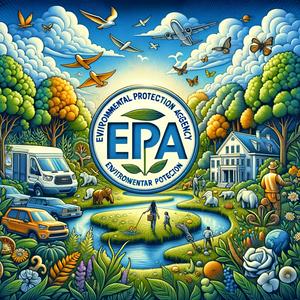EPA's Organizational Revamp: Streamlining Support, Shifting Priorities, and Regulatory Impacts
Big news from the Environmental Protection Agency this week: the EPA just announced the next phase of its agency-wide reorganization, aiming to modernize how it delivers clean air, water, and land to Americans. According to EPA Administrator Lee Zeldin, “These structural changes reinforce EPA’s unwavering commitment to fulfill its statutory obligations and uphold fiscal responsibility. By partnering our operations and mission support services, we can deliver results for American communities while remaining good stewards of taxpayer dollars.” Under this reorganization, the EPA is consolidating its finance and administrative offices into a single, streamlined entity that will oversee everything from facilities and acquisitions to grants, IT infrastructure, and human resources. These changes are designed to cut inefficiencies and provide stronger, faster support for environmental programs nationwide.In the Office of Enforcement and Compliance Assurance, operational changes will prioritize pollution issues with the broadest impact, shifting focus to violations that pose immediate threats to human health and safety or that could disrupt power and energy production. Meanwhile, the Office of Land and Emergency Management—which oversees the crucial Superfund program and disaster response—will be retooled to boost its speed and effectiveness in contamination prevention and cleanup, ensuring communities bounce back quicker from environmental disasters. EPA’s workforce also continues to shrink, with the agency having lost over 700 staff members since January, as reported by The Hill. That staff loss comes amid budget cuts that have slashed funding for science, technology, and enforcement, with potential ripple effects for compliance and oversight across states and businesses.Another big policy update: the EPA is extending compliance deadlines for coal ash management, letting facility operators submit reports and perform groundwater monitoring on a more flexible timeline, now stretching out to 2029 for some requirements. According to Administrator Zeldin, these steps offer “much needed regulatory relief for the power sector” in keeping with the Administration’s “Powering the Great American Comeback” agenda.Regulatory activity is shifting, too. The EPA recently moved to repeal greenhouse gas standards and amendments to mercury and air toxics limits affecting power plants—an effort touted by leadership as a way to lower costs for families and ensure energy reliability. Critics, however, warn that pulling back on enforcement of “forever chemicals” like PFAS could leave communities more vulnerable. And as extreme heat worsens air pollution, some experts are concerned that regulatory rollbacks may further endanger public health.For American citizens, these changes could mean tangible shifts: streamlined EPA support, but potentially less robust enforcement, especially in marginalized communities closest to pollution sources. Businesses may see loosened compliance pressures and longer lead times for new reporting requirements, offering mild respite for the power and manufacturing sectors but creating uncertainty around future rulemaking. State and local governments can expect closer coordination with federal agencies, yet may also face greater responsibilities for pollution enforcement and disaster response. On the international front, these regulatory rollbacks and new energy policies could impact U.S. credibility in climate action and environmental diplomacy.Listeners, if you want to make your voice heard on delayed or revised rules—like those governing coal combustion or PFAS in sludge—the EPA has reopened public comment periods. Visit epa.gov or your state EPA website for details and deadlines.Eyes will be on the EPA in the coming weeks as these organizational changes roll out and key compliance and comment deadlines approach. We'll keep you updated on what these developments mean for your health, your business, and your community.Thanks for tuning in—don’t forget to subscribe for the latest in environmental policy. This has been a Quiet Please production, for more, check out quietplease dot ai.For more http://www.quietplease.aiGet the best deals https://amzn.to/3ODvOta


